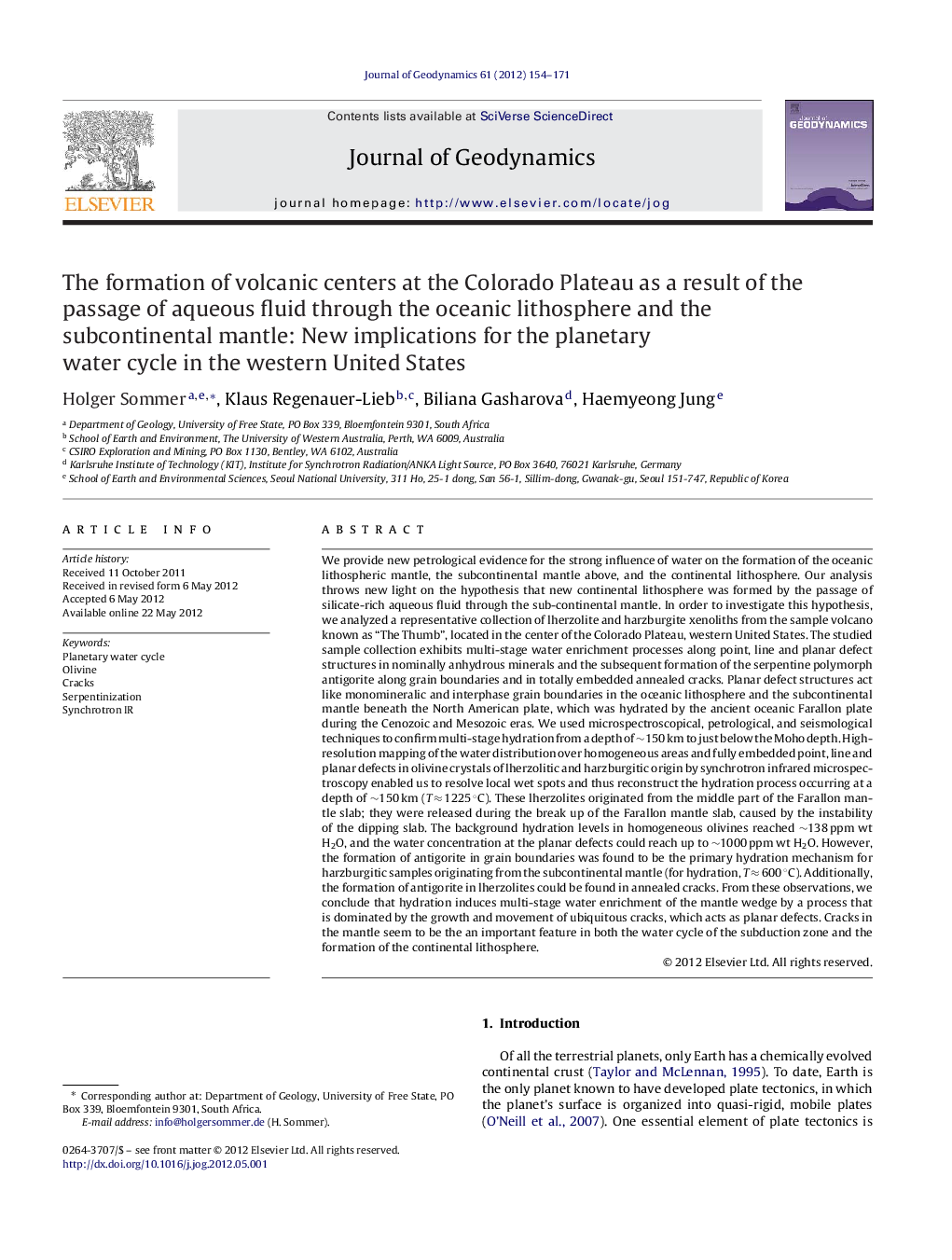| کد مقاله | کد نشریه | سال انتشار | مقاله انگلیسی | نسخه تمام متن |
|---|---|---|---|---|
| 4688279 | 1635788 | 2012 | 18 صفحه PDF | دانلود رایگان |

We provide new petrological evidence for the strong influence of water on the formation of the oceanic lithospheric mantle, the subcontinental mantle above, and the continental lithosphere. Our analysis throws new light on the hypothesis that new continental lithosphere was formed by the passage of silicate-rich aqueous fluid through the sub-continental mantle. In order to investigate this hypothesis, we analyzed a representative collection of lherzolite and harzburgite xenoliths from the sample volcano known as “The Thumb”, located in the center of the Colorado Plateau, western United States. The studied sample collection exhibits multi-stage water enrichment processes along point, line and planar defect structures in nominally anhydrous minerals and the subsequent formation of the serpentine polymorph antigorite along grain boundaries and in totally embedded annealed cracks. Planar defect structures act like monomineralic and interphase grain boundaries in the oceanic lithosphere and the subcontinental mantle beneath the North American plate, which was hydrated by the ancient oceanic Farallon plate during the Cenozoic and Mesozoic eras. We used microspectroscopical, petrological, and seismological techniques to confirm multi-stage hydration from a depth of ∼150 km to just below the Moho depth. High-resolution mapping of the water distribution over homogeneous areas and fully embedded point, line and planar defects in olivine crystals of lherzolitic and harzburgitic origin by synchrotron infrared microspectroscopy enabled us to resolve local wet spots and thus reconstruct the hydration process occurring at a depth of ∼150 km (T ≈ 1225 °C). These lherzolites originated from the middle part of the Farallon mantle slab; they were released during the break up of the Farallon mantle slab, caused by the instability of the dipping slab. The background hydration levels in homogeneous olivines reached ∼138 ppm wt H2O, and the water concentration at the planar defects could reach up to ∼1000 ppm wt H2O. However, the formation of antigorite in grain boundaries was found to be the primary hydration mechanism for harzburgitic samples originating from the subcontinental mantle (for hydration, T ≈ 600 °C). Additionally, the formation of antigorite in lherzolites could be found in annealed cracks. From these observations, we conclude that hydration induces multi-stage water enrichment of the mantle wedge by a process that is dominated by the growth and movement of ubiquitous cracks, which acts as planar defects. Cracks in the mantle seem to be the an important feature in both the water cycle of the subduction zone and the formation of the continental lithosphere.
► Formation of antigorite in totally annealed cracks in the mantle wedge.
► Water in monomineralic and interphase grain boundaries in olivine.
► Break off, of the Farallon slab beneath the western United States.
► OH concentration in olivine was measured with synchrotron based FTIR technique.
► “Wet spot” beneath the Colorado Plateau and weakening oft he Farallon slab.
Journal: Journal of Geodynamics - Volume 61, October 2012, Pages 154–171